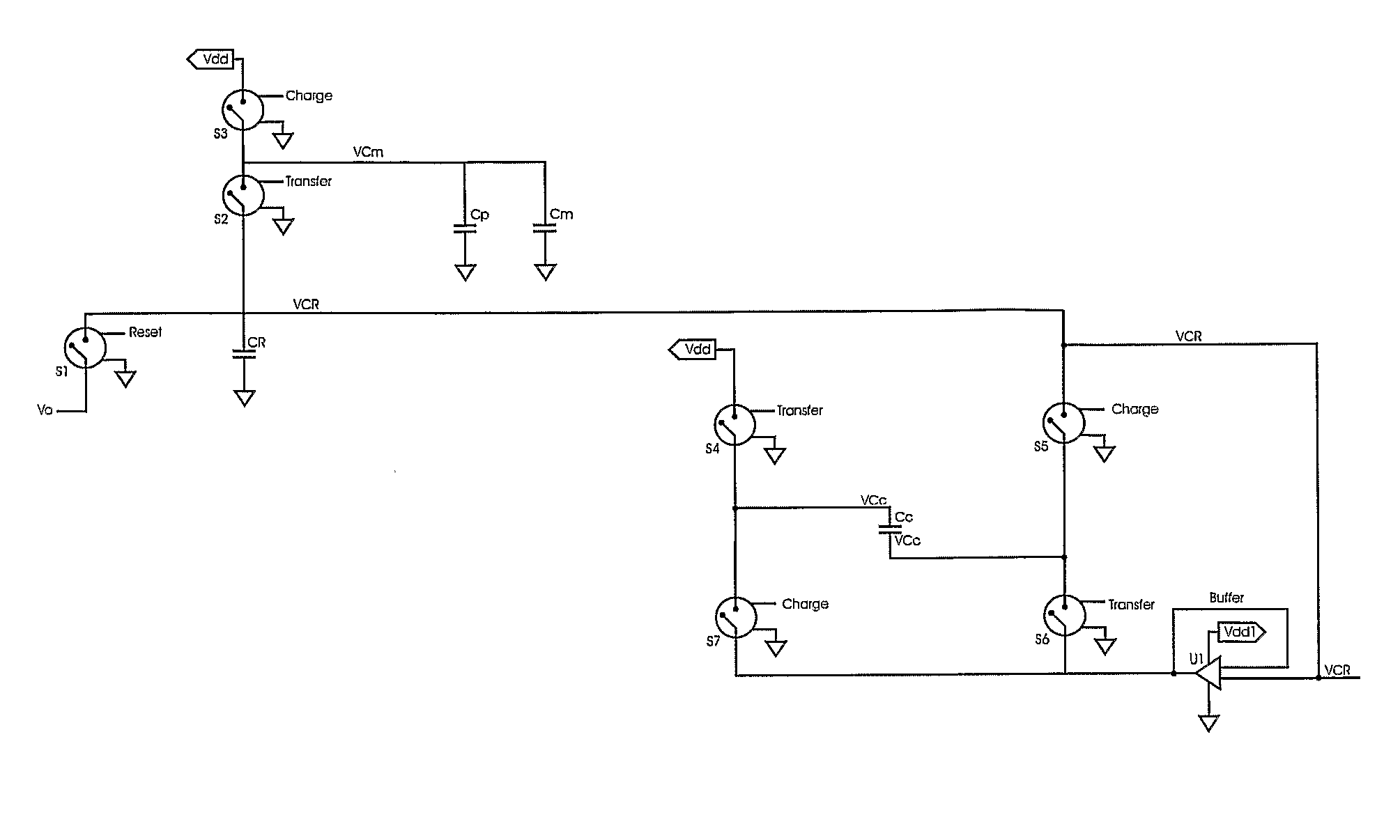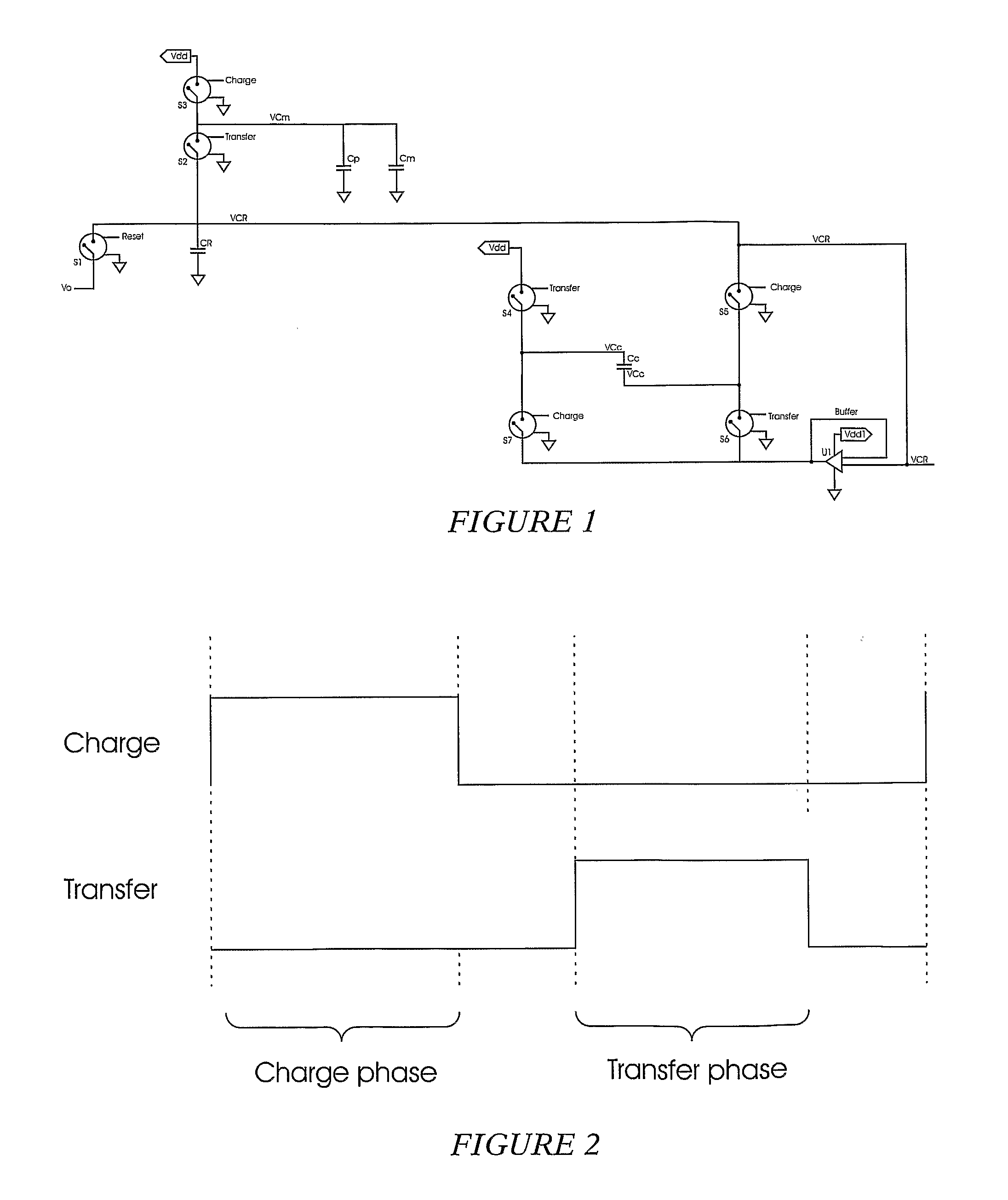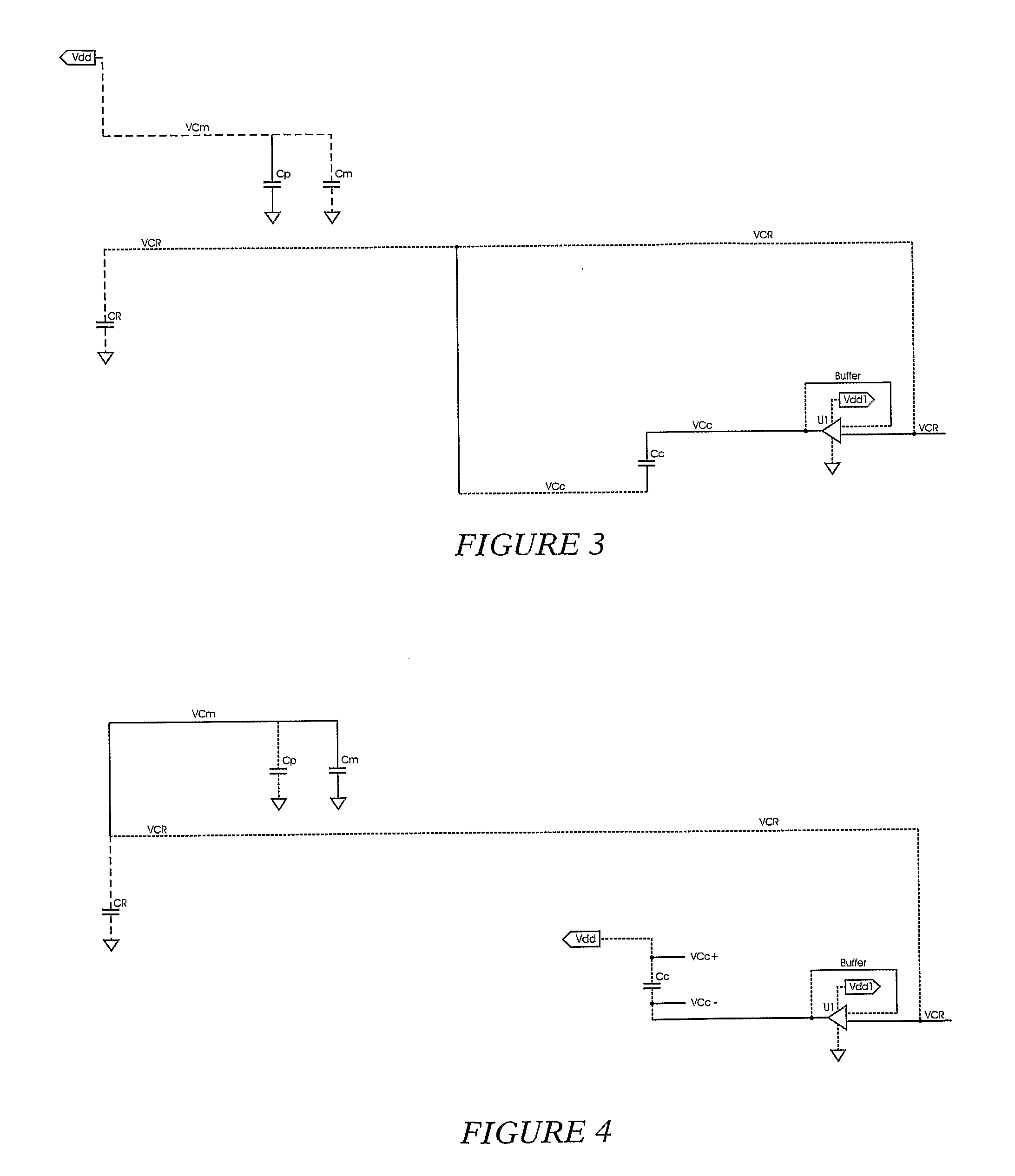Parasitic capacitance cancellation in capacitive measurement applications
a capacitance measurement and parasitic technology, applied in the direction of resistance/reactance/impedence, instruments, pulse techniques, etc., can solve problems such as degrading performance in these applications, and achieve the effect of negating the effect of the capacitance in the measurement system
- Summary
- Abstract
- Description
- Claims
- Application Information
AI Technical Summary
Benefits of technology
Problems solved by technology
Method used
Image
Examples
Embodiment Construction
[0043]FIG. 1 shows a charge transfer circuit as well as a parasitic capacitance cancellation circuit.
[0044]Before a “measurement period” a reference capacitor (CR) is initialized to a known voltage Va (e.g. 0V) by closing a switch S1.
[0045]The Charge Transfer Cycle consists of at least 4 phases, viz the Charge Phase (UP), the Transfer Phase (PASS) and two Deadtime Phases (FIG. 2) which ensure that the Charge Phase and the Transfer Phase do not overlap. During the Charge Phase switches S3, S5 and S7 are closed and switches S2, S4 and S6 are open. A measured capacitor (CM) as well as the parasitic capacitance (CP) are charged to a reference voltage (Vdd).
[0046]During the Transfer Phase the switches S2, S4 and S6 are closed and the switches S3, S5 and S7 are open. Capacitors CM and CP are connected to the reference capacitor (CR) and charge is transferred from CM and CP to CR. The voltage on CR at the end of the Transfer Phase is VCR.
[0047]Thus, during each Charge Transfer Cycle, the p...
PUM
 Login to View More
Login to View More Abstract
Description
Claims
Application Information
 Login to View More
Login to View More - R&D
- Intellectual Property
- Life Sciences
- Materials
- Tech Scout
- Unparalleled Data Quality
- Higher Quality Content
- 60% Fewer Hallucinations
Browse by: Latest US Patents, China's latest patents, Technical Efficacy Thesaurus, Application Domain, Technology Topic, Popular Technical Reports.
© 2025 PatSnap. All rights reserved.Legal|Privacy policy|Modern Slavery Act Transparency Statement|Sitemap|About US| Contact US: help@patsnap.com



